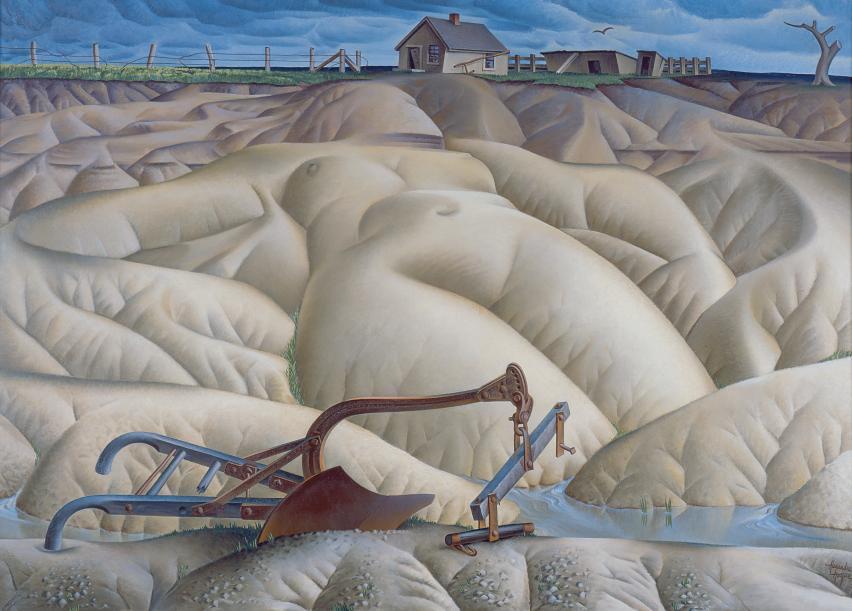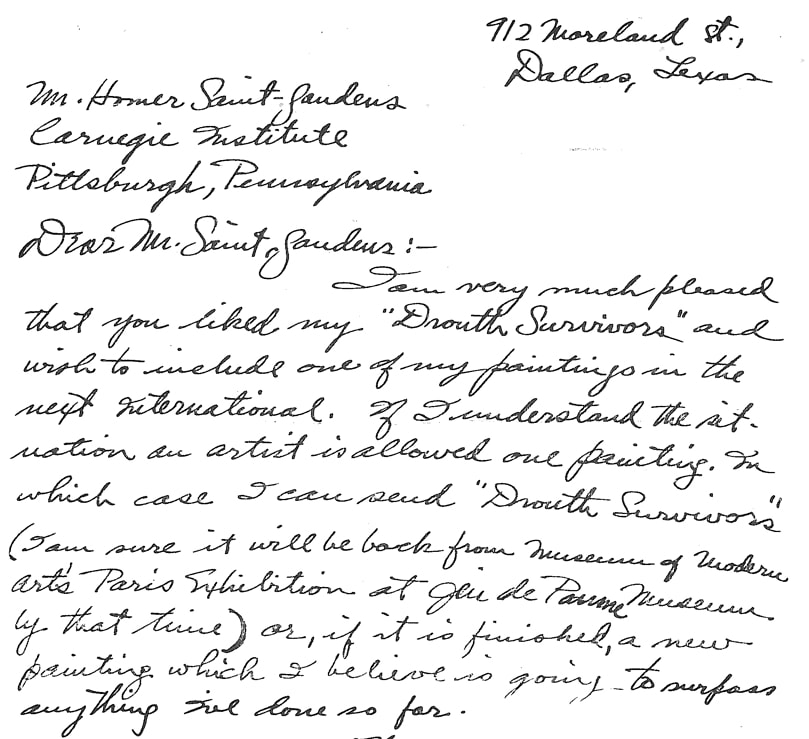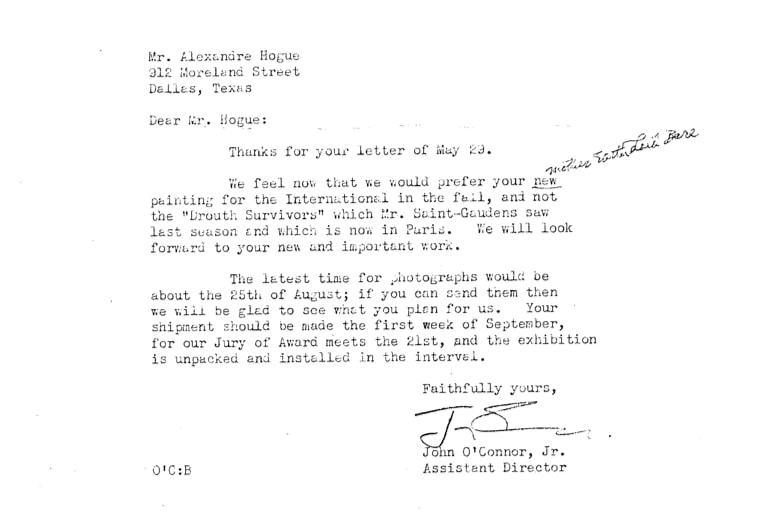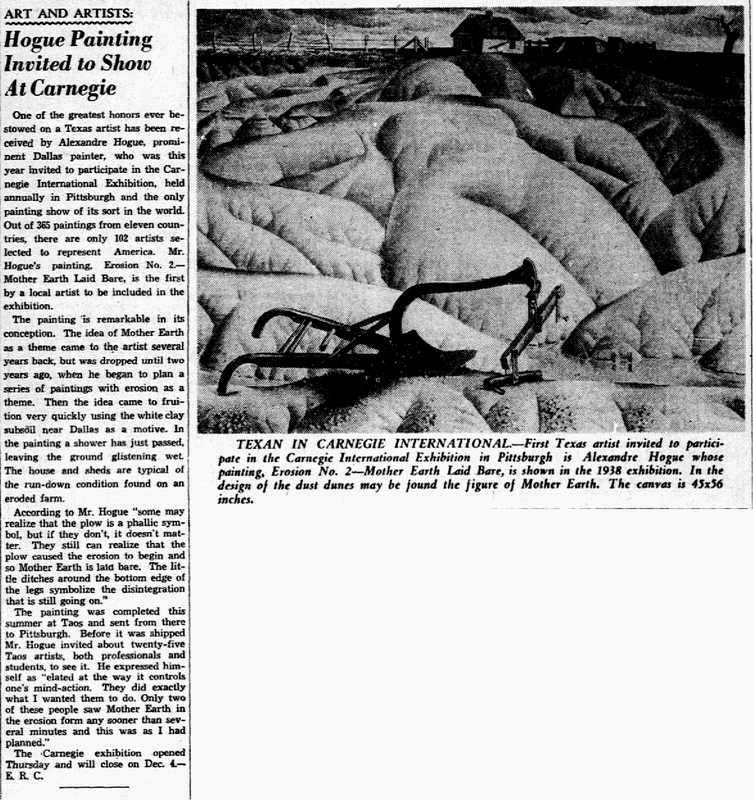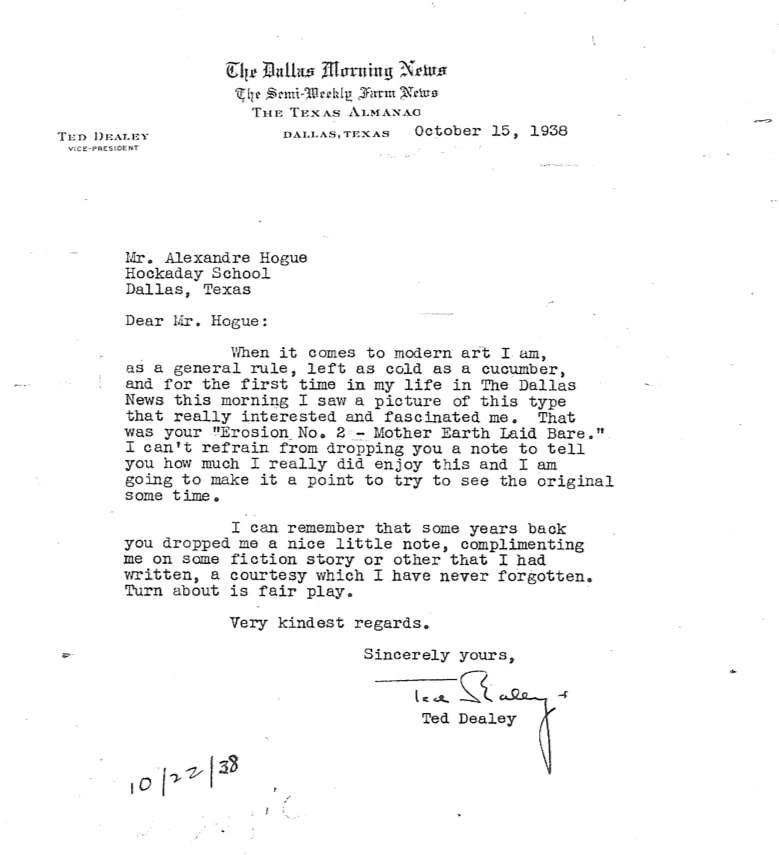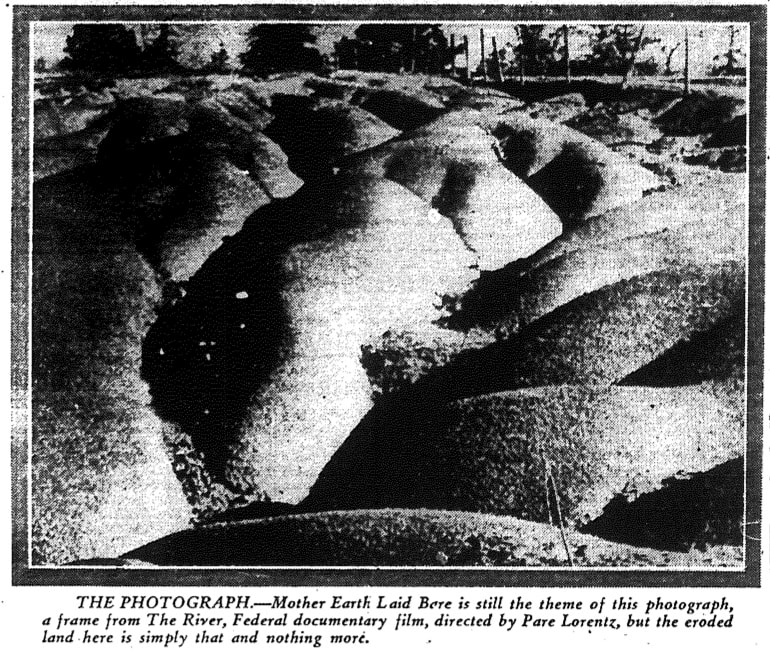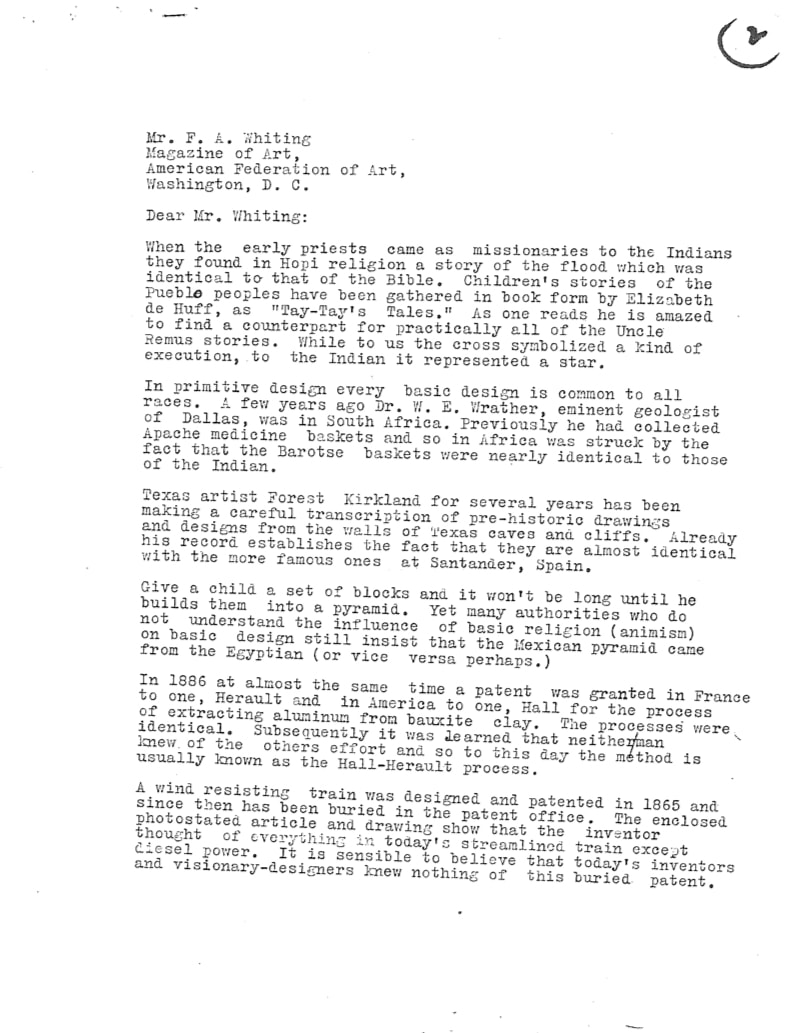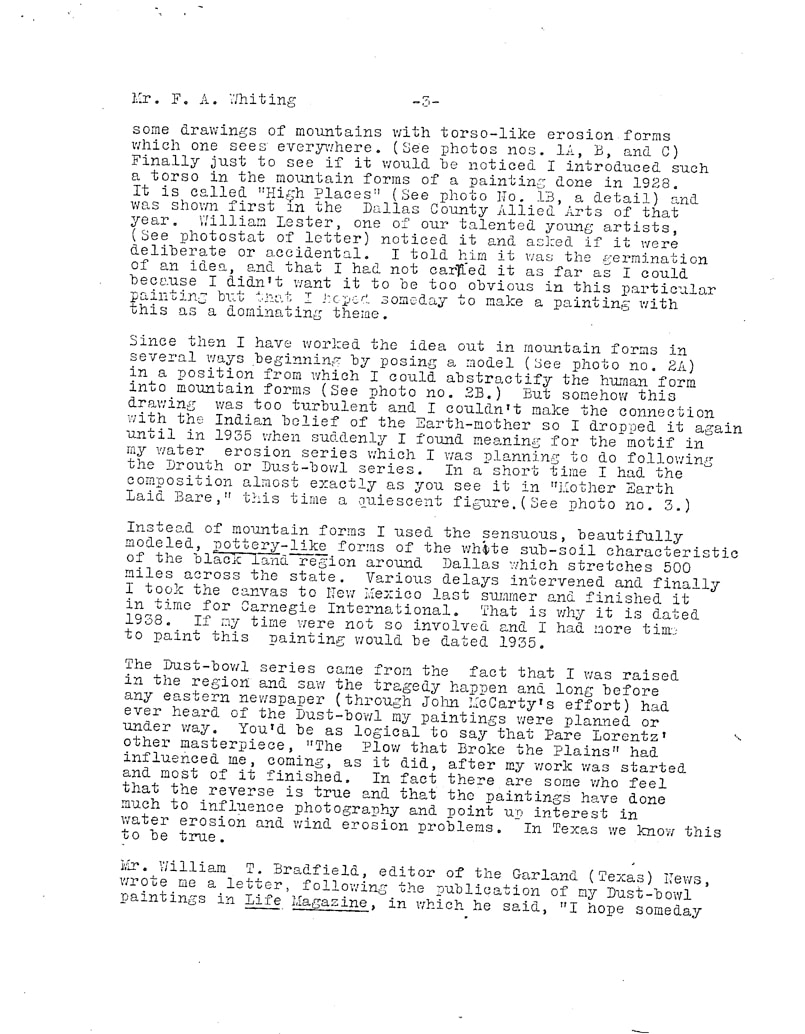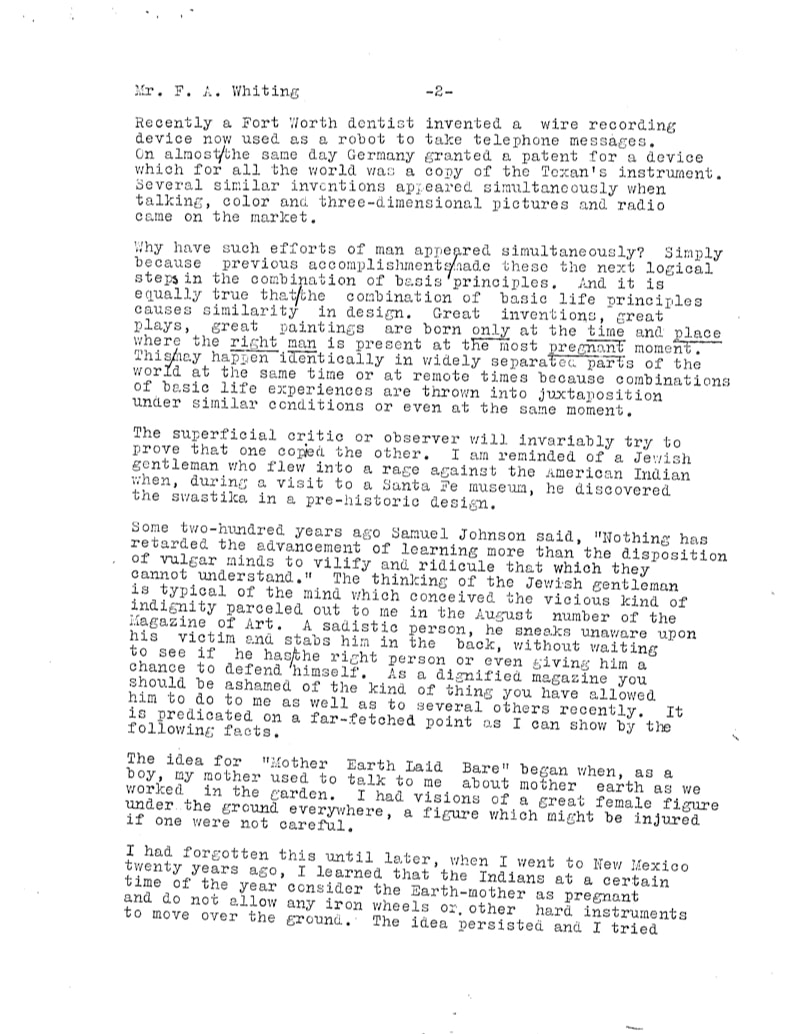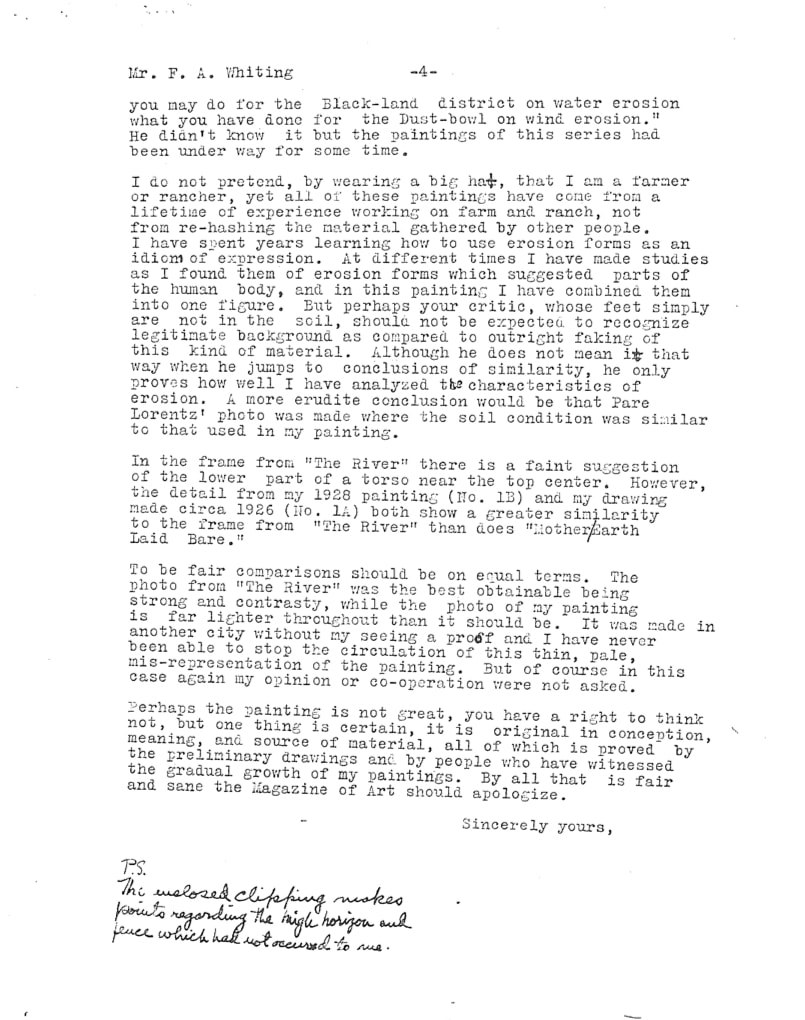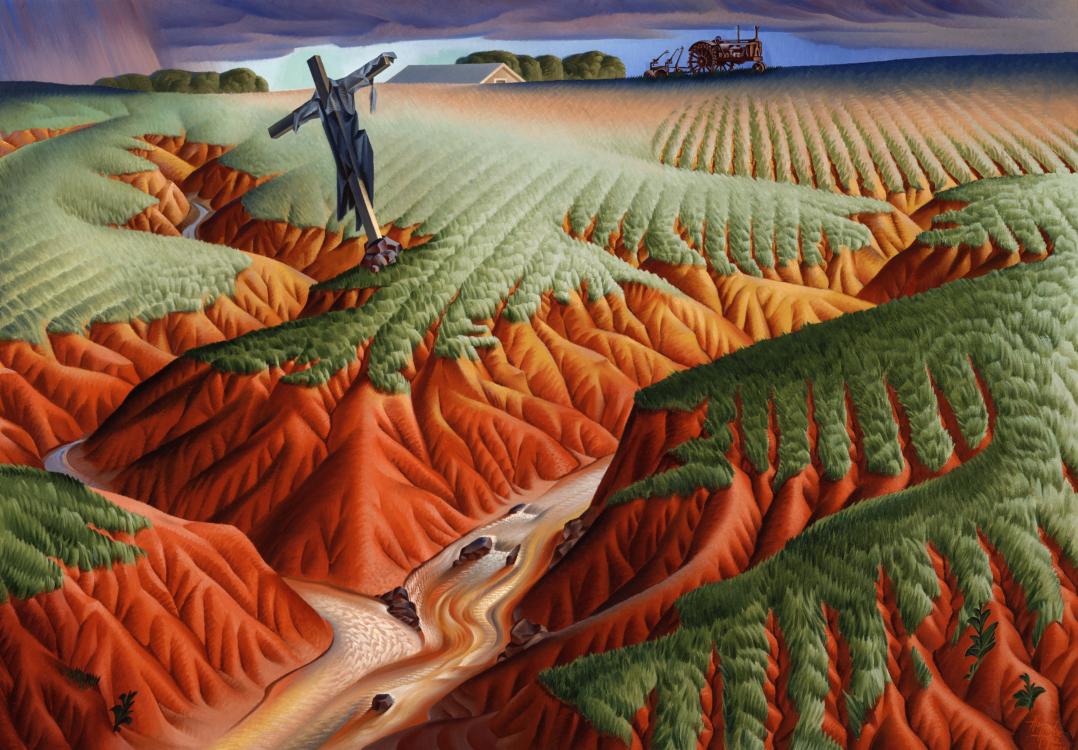|
Alexandre Hogue painted Mother Earth Laid Bare in 1938 as his second painting to show the effects of water erosion during the Dust Bowl (Figure 1). Figure 1. Alexandre Hogue, Mother Earth Laid Bare, 1938, The Philbrook Museum of Art. Alexandre Hogue: An American Visionary (Texas A&M University Press, 2011) claims Mother Earth Laid Bare was painted by Hogue in 1936. However, according to letters in the Smithsonian Archives of American Art, Hogue was in the process of completing Mother Earth Laid Bare in February of 1938 and would not complete the painting until the summer of 1938. The first mention of Mother Earth Laid Bare was in a letter from Alexandre Hogue to Homer Saint Gaudens, director of the Carnegie Institute, on February 25, 1938 (Figure 2). For the 1938 Carnegie International, Drouth Survivors was the initial painting wanted by the Carnegie Institute but Hogue referenced a new painting he was working on that will end up being picked instead. This painting was Mother Earth Laid Bare. Hogue wrote, “if it is finished, a new painting which I believe is going to surpass anything I’ve done so far. This painting depends so much on the time I can get. I am tied down by teaching and other obligations which take most of my time and then I am a slow painter.” Hogue had not completed Mother Earth Laid Bare at the time of this letter and would take a few more months to finish the painting. Figure 2. Alexandre Hogue, letter from Alexandre Hogue to Homer Saint Gaudens, February 25, 1938. Archives of American Art, Smithsonian Institution, Reel No. 1480. John O’Connor from the Carnegie Institute responded to Hogue on May 31, 1938 (Figure 3). He referenced Hogue’s new painting Mother Earth Laid Bare and wrote “We feel now that we would prefer your new painting for the international in the fall and not the Drouth Survivors which Mr. Saint-Gaudens saw last season.” Figure 3. Alexandre Hogue, letter from John O’Connor to Alexandre Hogue, May 31, 1938. Archives of American Art, Smithsonian Institution, Reel No. 1480. On October 15, 1938, an article in the Dallas Morning News announced Hogue's inclusion in the 1938 Carnegie International Exhibition. An image of Mother Earth Laid Bare was printed alongside the announcement. The announcement stated "the painting was completed this summer at Taos and sent from there to Pittsburgh." Hogue would spend the summers teaching classes on painting in Taos, New Mexico. During his time in Taos, he invited a small circle of artists to see the completed painting for the first time. This Dallas Morning News article was the first time a photograph of the painting was released to the public. Figure 4. "Hogue Painting Invited to Show At Carnegie," Dallas Morning News, October 15, 1938. In a letter from Ted Dealey on October 22, 1938, Dealey wrote to Hogue explaining his reaction to his new painting Mother Earth Laid Bare (Figure 5). Dealey explained, “for the first time in my life in the Dallas Morning News I saw a picture of this type that really interested and fascinated me. That was your Erosion No. 2 - Mother Earth Laid Bare.” Figure 5. Alexandre Hogue, letter from Ted Dealey to Alexandre Hogue, October 22, 1938. Archives of American Art, Smithsonian Institution, Reel No. 1481. Despite the painting’s initial success, Mother Earth Laid Bare was accused of plagiarism in 1939. A scene from the film The River contained a frame similar to Hogue’s painting (Figure 6). The film was released on February 4, 1938 when Hogue states he was in the process of working on his painting. Hogue would not complete the painting until the summer after the film's release. The August 1939 issue of Magazine in Art accused Hogue of copying the frame from the film for Mother Earth Laid Bare in an article titled “Strange Coincidence.” Figure 6. Film still from The River, directed by Pare Lorentz, February 4, 1938. In a letter to Mr. Whiting in 1939, Hogue addressed the conflict and defended his painting, claiming his concept for Mother Earth Laid Bare was created long before the film (Figure 7). Hogue began his letter by listing examples of people throughout history who had created identical inventions without realization, proving copying does not have to take place in order to create something similar. Hogue explained the history of his painting, beginning with his vision from childhood of a giant female figure who lived under the ground and could be harmed if not taken care of properly. He wrote, “The idea for Mother Earth Laid Bare began, when as a boy, my mother used to talk to be about mother earth as we worked in the garden.” Hogue explained he began to make drawings of a female figure made out of the earth when traveling to New Mexico in the late 1920’s. Hogue claimed to later use these drawings for his painting. He wrote, “all of these paintings have come from a lifetime of experience working on farm and ranch, not from re-hashing the material gathered by other people.” Figure 7. Alexandre Hogue, letter from Alexandre Hogue to Mr. F. A. Whiting, 1939. Archives of American Art, Smithsonian Institution, Reel No. 1481. Alexandre Hogue could have backdated Mother Earth Laid Bare to 1936 as an attempt to prove the painting was created before the release of the film The River on February 4, 1938. This could possibly account for the incorrect date of 1936, as it is listed in the book Alexandre Hogue: An American Visionary. The documents concerning Mother Earth Laid Bare in the Smithsonian Archives of American Art confirm the painting was only in progress in February 1938. We do not know the level of incompletion since there are no studies or drafts for the painting known at this time. However, according to the documents and news articles, we do know Mother Earth Laid Bare was completed in Taos, New Mexico in the summer of 1938. Russell Tether, President Katherine Hillman, Associate Russell Tether Fine Arts Associates, LLC
Comments are closed.
|

